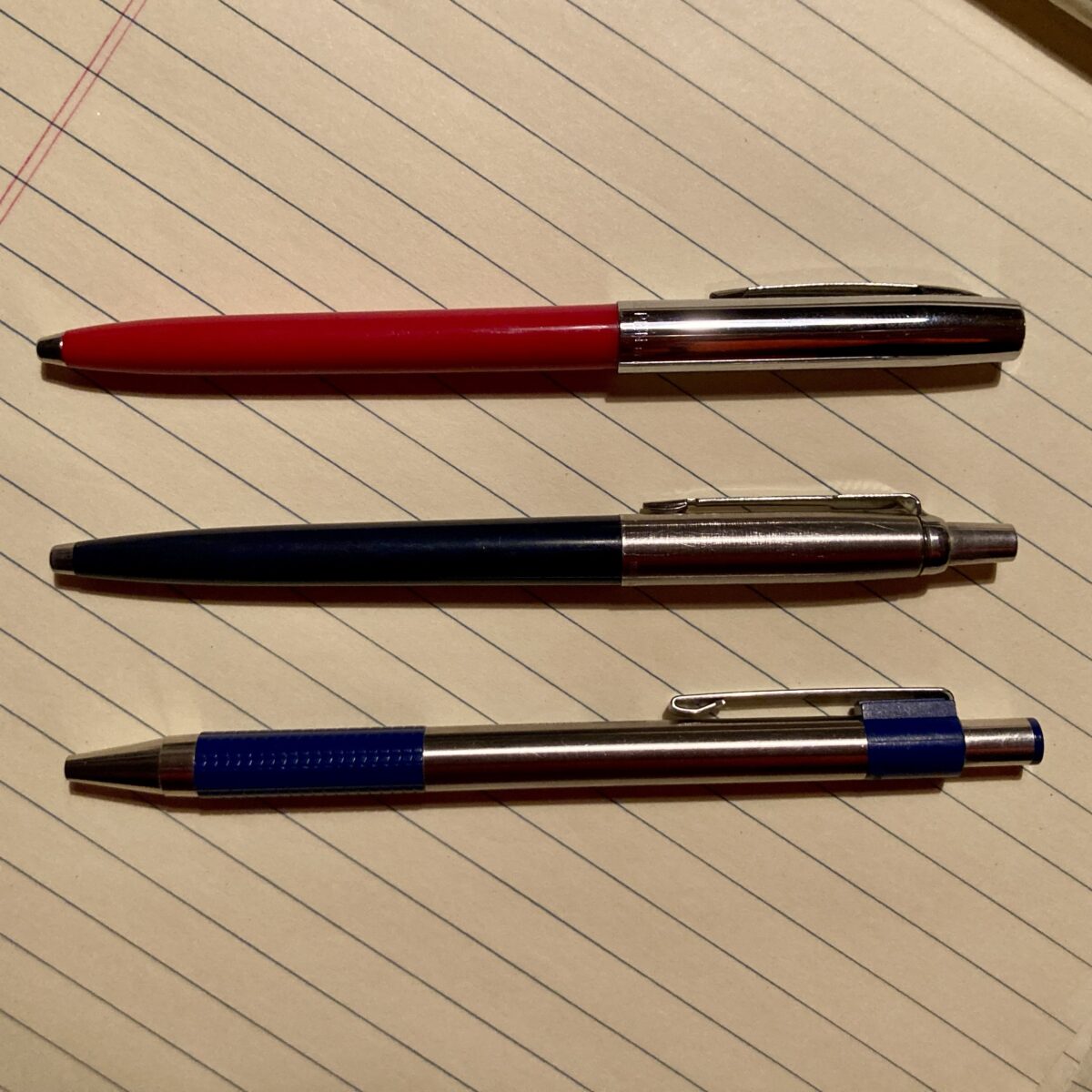I recently switched to (mostly) paper-based grading in one of my courses. This has me thinking about pens.
Above (top to bottom) are a: Fisher Space Pen (USA, ca. 2017, medium, black); Parker Jotter (USA, ca. 1999, medium, blue); and Zebra F-301 (Indonesia, ca. 2018, fine, blue). I will comment on each.
The Parker ties with the Zebra for balance, but the Parker is heavier. Its click is also more satisfying. The Space Pen not balanced, but its click has interesting bounce.
I enjoyed grading with the Parker very much. Its medium point is between the Zebra’s fine and Space Pen’s medium. This was good for writing on the papers. But it also seems to do best on copy paper — and does not perform like Space Pen in non-ideal weather (for obvious reasons).
The Parker also clipped nicely to my jeans — kind of like a tactical pocketknife. Zebra also can do this, but it doesn’t have the heft to stay put. It also has a tendency to get clicked open. Fisher will stay clipped to anything, but it is hard to clip because that clip has little give.
For the shirt pocket, I like Zebra most. It’s so light! Fisher is not fun in the pocket because it’s hard to clip. Parker also is good in the shirt.
I also used a Fisher bullet format for several years (USA, ca. 1993, medium, black). It is a great pen to keep in a coat or pants pocket. It just sits there mostly unnoticed and has a cap that seals well.
Overall, the Zebra is a lightweight, inexpensive, and enjoyable pen. I like it for flying.
The Parker is best for grading. The Zebra probably is next. The Parker will remain my go-to. I will stick to my plan for the Fisher, which is “summer pen.”
